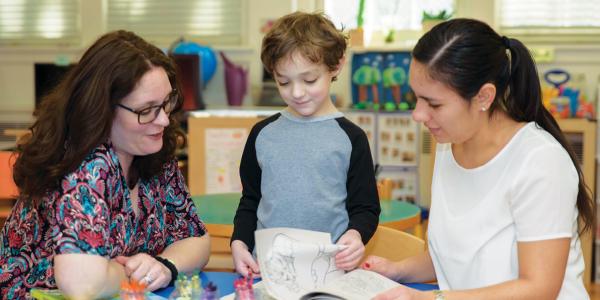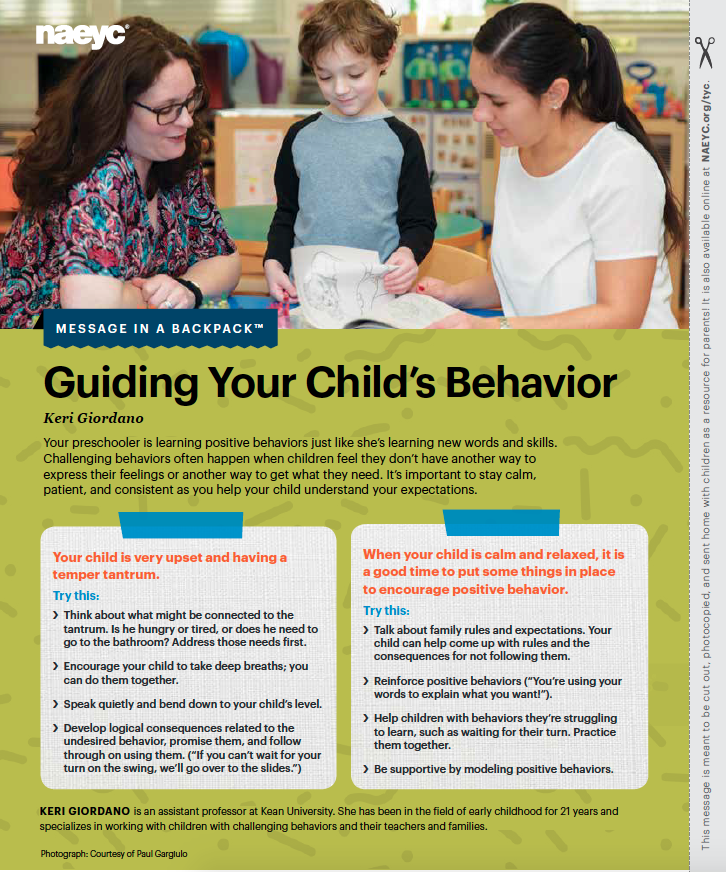Message in a Backpack™ Guiding Your Child’s Behavior

You are here
Home / Resources / Publications / Teaching Young Children / April/May 2018 / Message in a Backpack™ Guiding Your Child’s Behavior
Keri Giordano
Your preschooler is learning positive behaviors just like she’s learning new words and skills. Challenging behaviors often happen when children feel they don’t have another way to express their feelings or another way to get what they need. It’s important to stay calm, patient, and consistent as you help your child understand your expectations.
Your child is very upset and having a temper tantrum.
Try this:
- Think about what might be connected to the tantrum. Is he hungry or tired, or does he need to go to the bathroom? Address those needs first.
- Encourage your child to take deep breaths; you can do them together.
- Speak quietly and bend down to your child’s level.
- Develop logical consequences related to the undesired behavior, promise them, and follow through on using them. (“If you can’t wait for your turn on the swing, we’ll go over to the slides.”)
When your child is calm and relaxed, it is a good time to put some things in place to encourage positive behavior.
Try this:
- Talk about family rules and expectations. Your child can help come up with rules and the consequences for not following them.
- Reinforce positive behaviors (“You’re using your words to explain what you want!”).
- Help children with behaviors they’re struggling to learn, such as waiting for their turn. Practice them together.
- Be supportive by modeling positive behaviors.
Photograph: Courtesy of Paul Gargiulo
Message in a Backpack™ is available online in Spanish. Visit NAEYC.org/tyc to start reading now!
Keri Giordano
Keri Giordano is an assistant professor at Kean University. She has been in the field of early childhood for 21 years and specializes in working with children with challenging behaviors and their teachers and families.
